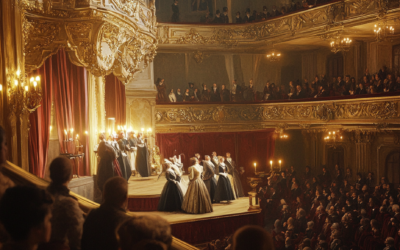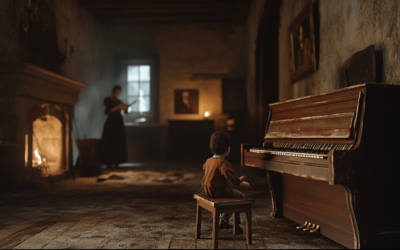Rewriting Mozart
A Revealing New Interview on His Thematic Catalogue
Introduction
Welcome to MozartrazoM, your source for in-depth research and fresh perspectives on Wolfgang Amadeus Mozart. We’re excited to present a brand-new interview that challenges many of the long-held assumptions about Mozart’s Thematic Catalogue (1784–1791). Conducted by Swedish journalist Henry Grynnsten, this conversation delves into groundbreaking forensic techniques—like advanced ink analysis and digital image processing—that may change the way we view Mozart’s late works.
"The fact is, once you start examining the Catalogue with modern tools, multiple authors become an extremely plausible reality. We see inconsistencies in the formation of musical clefs, discrepancies in the inks, and even vocabulary usage that doesn’t match Mozart’s letters."
Interview Excerpt
What You’ll Discover
- Surprising Inconsistencies: Learn how subtle differences in handwriting and ink usage raise questions about the Catalogue’s authenticity.
- Multiple Hands at Work?: Explore the possibility that Mozart’s Thematic Catalogue may have been compiled posthumously by different contributors, rather than by the composer himself.
- Far-Reaching Implications: Understand why re-evaluating the Thematic Catalogue could radically alter our view of Mozart’s late compositions—including the Clarinet Concerto and the “Jupiter” Symphony.
- Methodology and Technology: Gain insight into the cutting-edge forensic and digital analysis methods used by our team of musicologists and forensic specialists.
Curious to read the full story? Download the complete PDF below.
Click here to download the PDF interview (no registration required)
Meet the Researchers
The interview features Dr. Luca Bianchini, Dr. Anna Trombetta, and Prof. Martin Jarvis—a team of experts from the fields of musicology, palaeography, and forensic document examination. Their combined expertise offers a riveting new lens through which to study one of classical music’s most celebrated figures.
Interested in More?
- For detailed forensic evidence and further discussion, feel free to contact us directly.
- Follow us on social media for updates on upcoming articles, interviews, and events related to Mozart scholarship.
Join the Conversation
We’d love to hear your thoughts on these findings! Leave a comment below or share your reactions with us on social media. Let’s keep the dialogue alive and explore Mozart’s musical legacy from every possible angle.
Thank you for visiting MozartrazoM. We hope this interview sparks your curiosity and enriches your understanding of Mozart’s remarkable, yet still mysterious, life and work.
You May Also Like
The Vienna Disaster
The failure of La Finta Semplice in Vienna was a turning point for the Mozart family, revealing the cracks in the facade of Wolfgang’s prodigious reputation and prompting a desperate escape to Italy in search of redemption.
From Innsbruck to Bolzano
From Innsbruck to Bolzano, the Mozart family’s journey was a blend of strategic networking and missed opportunities, revealing the challenges of securing fame in 18th-century Europe.
The Myth of Mozart’s Sight-Reading Genius
Mozart’s so-called sight-reading miracles were less about supernatural talent and more about clever improvisation, as two key 18th-century witnesses make clear.
The Hidden Legacy of Michael Haydn
Mozart’s Symphony No. 37, K.444, is more Haydn than Mozart. How did this happen? A story of deception and misattribution unfolds.
The Myth of Mozart’s Education
For centuries, Wolfgang Amadeus Mozart has been celebrated as a musical prodigy, effortlessly composing masterpieces from a young age. However, when we peel back the layers of myth surrounding his early education, a different picture emerges—one in which his father, Leopold Mozart, plays a far more controlling and influential role than is often acknowledged. This article explores the true nature of Mozart’s education, examining how much of his early works can be attributed to his own genius, and how much was the product of his father’s meticulous and often self-serving guidance. Was Wolfgang’s brilliance entirely his own, or was it a crafted image designed by Leopold?
The Myth of Mozart’s Childhood
Mozart’s childhood is often romanticised, but behind the myth lies a more complex reality. This post explores the hidden dynamics within his family, questioning the traditional narrative of Mozart's early years and shedding light on the forgotten role of his sister,...







